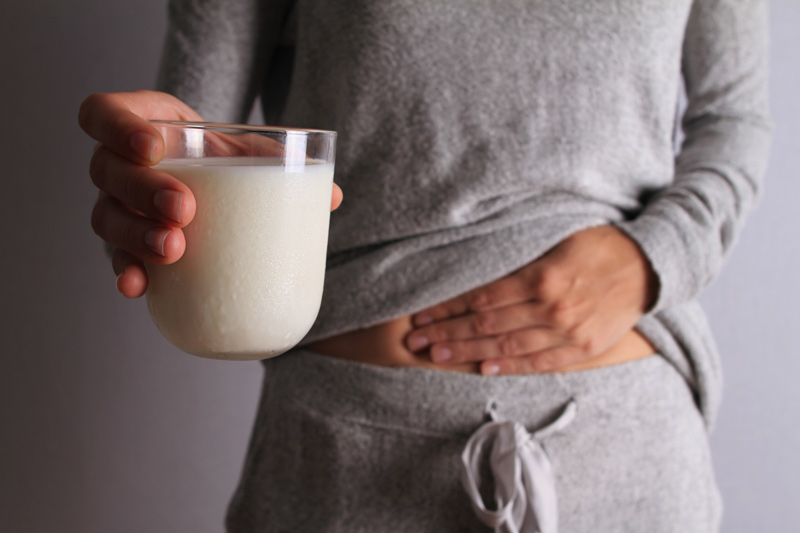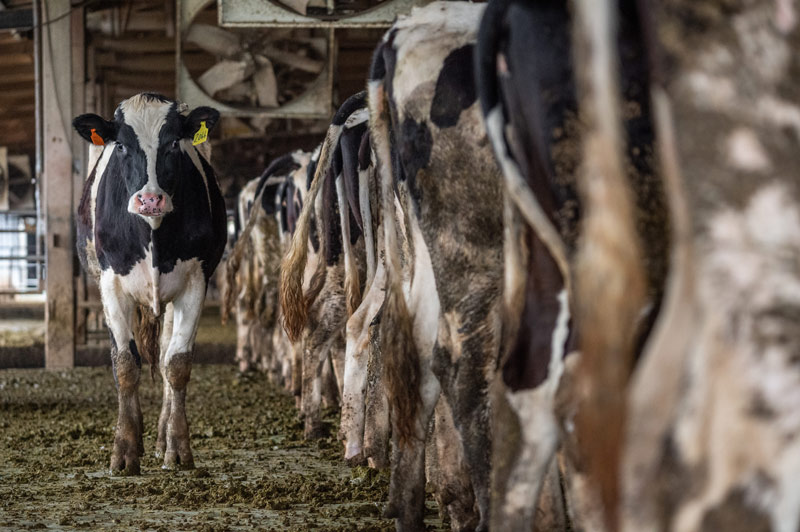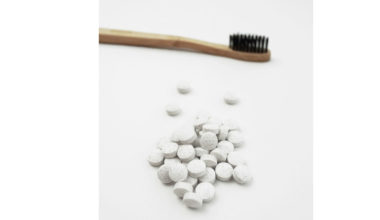Having been considered perfect for decades, milk is very controversial these days. Once digestive issues, allergies, a dairy industry with practices that go against animal welfare, resource guzzling and industrial processing are all factored in… Milk is no longer very clean! So the question arises: should we still consume it? If so, which kind of milk and in what way? And if not, what should take its place?
Milk – an (old) myth is debunked
Like all lobbies, milk lobbies are on a mission: to make us consume the product they defend and to dispel our doubts, even if they are justified. Advertising campaigns do their job of convincing us that “dairy products are our friends for life”. And the introduction of milk given out in schools, especially in the US, is a result of this. By trying to equate dairy products with calcium, manufacturers give them the image of a “healthy” food that’s nutrient-rich and healthy. While this strategy worked for years, today’s consumers are better informed and are getting to see the other side of the coin. For example, if the advert says that a bar of “Kinder Chocolate provides as much calcium as a big glass of milk”, and it’s true… That’s probably because there is not actually very much calcium in milk!
The calcium paradox
It’s a big disenchantment, but something worth knowing: there are a great many foods that contain as much or even more calcium than milk. On the list you’ll find almonds, chia seeds, chickpeas, green leafy vegetables such as broccoli, artichokes and spinach, fresh mint and parsley, Chinese cabbage, kale, asparagus, etc. The second disenchantment is that it does not combat osteoporosis, which is reportedly not caused by calcium deficiency but by chronic inflammation. Moreover, milk itself is a pro-inflammatory food! Worse still, milk and dairy products contain methionine and phosphoric acid, which are acidifying factors that can lead to calcium loss and bone demineralisation… Especially when consumed along with animal protein, which is also an acidifying factor. This is what the WHO calls “the calcium paradox”. The countries where people consume the most dairy products on a daily basis are those where the rates of the consequences of osteoporosis (such as hip fractures) are the highest. Conversely, the countries with the lowest intake register far fewer fractures. So what can we do about it? Well, instead of trying to take in calcium via these foods, we should retain the calcium that’s already there in our bones. And to do so, we should favour a plant-based diet, i.e. foods with an alkaline pH.
Is milk bad for human health?
Cow’s milk should be seen for what it is: a drink made of water and fat, which is high in saturated fatty acids. These are unnecessary fats which, in large quantities, can be unhealthy and lead to obesity. They should be consumed in moderation (unlike unsaturated fats, which are plant-based fats). So consuming too much milk can have a negative impact on inflammation and osteoporosis, and also on diseases such as type I diabetes. Cow’s milk has another drawback: it binds toxins. That’s why it is sometimes recommended that you stop consuming milk until you have recovered from certain infections. This the reason why it gets so demonised by some nutritionists and naturopaths. The culprit is the protein in milk (casein), which is said to irritate the immune system and perpetuate certain chronic illnesses, particularly respiratory illnesses such as asthma or bronchitis, as well as those associated with inflammation. In fact, some people may notice a marked improvement after cutting dairy products out of their diet.
Milk: intolerances and allergies

Have you ever stopped to think about the fact that humans are the only species to consume the milk of another mammal? And that we are the only ones to consume milk after the natural weaning age? Cows’ milk is intended for and suited to calves. More importantly though, in humans, after infancy, the body no longer produces lactase, an enzyme that splits lactose into glucose and galactose, a process necessary for the proper digestion of milk. This accounts for lactose intolerance whereby this type of sugar, which is well assimilated by infants, is difficult for adults to digest. This intolerance is manifested in specific symptoms: stomach ache, discomfort, bloating and diarrhoea, which can be alleviated with the use of skimmed milk, but will only disappear once cow’s milk is dropped completely. The same goes for cow’s milk allergies, which are also manifested in inflammatory symptoms: irritable bowel syndrome and rheumatism. Dropping cow’s milk protein altogether can lead to very rapid improvements in some cases.
Milk that’s found wanting in a lot of ways… And not all that pure
Is mass-produced milk a pure, nutrient-rich food? There is room for doubt, given the processing that it goes through. Even so-called “whole milk” is partially skimmed, and all milk is homogenised: a process that changes it right down to its molecular structure! While farm milk was a useful fat-rich, nourishing food, today’s mass-produced milk is stripped of these qualities. These artificial processes have turned it into an adulterated drink stripped of the microbial flora that is beneficial to our immune system. Worse still, mass-produced milk is said to contain certain harmful substances: pesticides, residues of growth hormones and (the many) antibiotics given to cows during lactation, to compensate for the poor conditions under which they are farmed.
Milk: ethics and animal suffering

We tend to forget that in order to lactate, a cow must first give birth to a calf. So dairy cows, which are inseminated (too) regularly, give birth to calves that are denied their mothers’ milk and are torn away from their mothers very soon after birth. A male calf will be considered a waste product and “destroyed”, or at best, sent to slaughter. A female calf will end up being a dairy cow like her mother. The larger the farm, the faster the pace and the more the animals are exploited, to the point of exhaustion. This overexploitation leads to oversized udders, and sometimes infected teats and injured feet. This reduces the life expectancy of a cow from 20 years to five years. Some are even sent to slaughter while still pregnant if they do not produce enough milk. This is said to account for almost 40% of “beef”. A great many videos document the hellish conditions of factory farms.
The environmental impact of milk
For these cows to be farmed they have to be fed, of course, which means growing water-guzzling cereal crops, which sometimes come from far away. Let alone the animal waste that can pollute the soil and rivers. And be aware that this type of production enlarges the carbon footprint of milk. Pared-down farming whereby cows graze on grassland rather than being fed cereals such as soya or oilseeds drastically reduces the environmental impact of milk. Because this footprint is determined by the cultivation of cattle feed, and also by the animals’ methane emissions. And this footprint can even be beneficial in some cases. Grassland farming can store carbon, and thus compensate for the greenhouse gas emissions of cattle. Pastures contribute to biodiversity and to the water cycle. They also store carbon thanks to animal excreta, which put nearly 30% of the carbon ingested into the soil. However, specific procedures governing soil turning (which releases carbon), the length of time animals are kept in one place and the selection of hardy plant species must be in place to achieve a positive ecological result.
Alternatives – diversification, local, plant-based

Ecologically speaking, plant-based milks have a footprint, too. In some cases, some of the soya grown for soy milk is sold on as cow feed. But in that case, you bypass the chain of animal cruelty. So you should cut down on mass-produced dairy products in favour of those from organic farms or independent farms, and buy the least-processed varieties possible, in reasonable quantities.
You can also switch between cow’s and ewe’s or goat’s milk, but the pitfall of the insemination cycle and the separation of the young from their mothers is the same, whatever the animal. You can also go for plant-based desserts instead of dairy desserts and yoghurts, or even make them yourself. The right move would be to reduce our overall milk intake, to favour local, organic sourcing, and also to embrace a more diversified and plant-based diet to provide the body with healthy nutrients, including calcium, without putting up with the drawbacks of milk.
The myths around milk are being debunked. This foodstuff, which was elevated to the status of perfect food by its symbolic image of purity and wholesomeness, is now being put back where it belongs, as people are more clued up. It is still a food that should not be consumed to excess, with close attention paid to its origin and the production method used.
This change in production methods is the only way to help rehabilitate milk, while eating an increasingly plant-based diet is still the way forward when it comes to human health and ecology.







